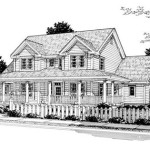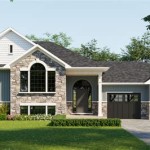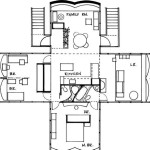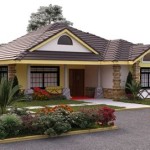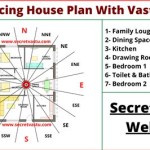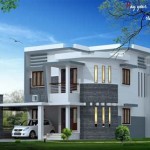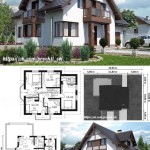Loft House Plans: Essential Aspects to Consider
Loft house plans offer a unique and stylish way to maximize space in urban environments. These versatile structures feature high ceilings, open floor plans, and large windows that create a sense of spaciousness and modernity. If you're considering building a loft home, here are some essential aspects to keep in mind:
Ceiling Height
Ceiling height is a defining characteristic of loft houses. High ceilings not only add visual appeal but also contribute to the feeling of openness and airiness. However, excessively high ceilings can make a space feel cold and impersonal. Aim for a ceiling height of 10-12 feet, which provides ample headroom without compromising coziness.
Open Floor Plan
Loft houses typically feature open floor plans that allow for a seamless flow of movement between different areas. This layout maximizes space utilization and promotes a sense of spaciousness. However, it's important to consider how you will define and separate different functional areas within the open plan. Strategic use of furniture, rugs, and lighting can help create a sense of privacy and division.
Windows
Natural light is essential in loft houses. Large windows allow for ample daylight to flood the interior, reducing the need for artificial lighting. Consider installing windows on multiple walls to create a cross-breeze and enhance ventilation. If privacy is a concern, explore options such as blinds, curtains, or translucent window coverings.
Storage
Storage can be a challenge in loft houses with open floor plans. Built-in storage solutions, such as shelves, closets, and cabinets, can maximize vertical space and keep the home clutter-free. Consider incorporating hidden storage spaces under stairs, in alcoves, or behind walls to maintain a minimalist aesthetic.
Heating and Cooling
Loft houses often present unique challenges when it comes to heating and cooling due to their high ceilings and large windows. Central heating and cooling systems can be effective but may require special modifications to accommodate the open layout. Consider installing radiant floor heating or ceiling fans to supplement the system and provide even temperature distribution.
Structural Elements
Loft house plans typically involve exposed structural elements such as beams, columns, and brick walls. These elements add character and industrial charm to the space. However, it's crucial to ensure that all structural components are sound and properly maintained to prevent safety hazards.
Code Compliance
Before finalizing your loft house plans, it's essential to check local building codes and regulations. Loft conversions may require specific permits, inspections, and structural modifications to meet safety standards. Consult with experienced builders or architects to ensure that your plans comply with all applicable requirements.
Conclusion
Loft house plans offer a stylish and functional way to create a unique living space in an urban setting. By considering essential aspects such as ceiling height, open floor plan, windows, storage, heating and cooling, structural elements, and code compliance, you can design a loft home that meets your needs and provides a comfortable and inviting living environment.

41 Unique 3d Floor Plan Ideas Engineering Discoveries Tiny House Loft Small Apartment Design Interior

Tiny House Floor Plan With Bedroom Loft

20 House Plans With Lofts Tiny Small Luxury Designs Blog Homeplans Com

Image Result For 1 Bedroom With Loft House Plans Plan Cottage Floor One
Small Cabin House Plans With Loft And Porch For Fall Houseplans Blog Com

1 5 Bedroom Bathroom Loft Apartment Floor Plan Small House Plans With
Small Cabin House Plans With Loft And Porch For Fall Houseplans Blog Com

Small Cabin House Plans With Loft And Porch For Fall Houseplans Blog Com

Tiny House Floor Plan With Bedroom Loft

Loft Cabin Tiny House Floor Plans Small Design

